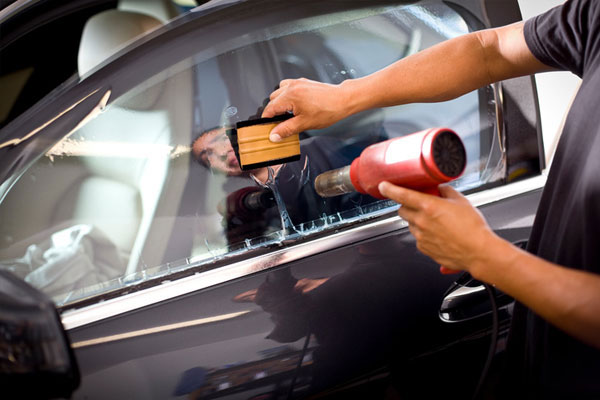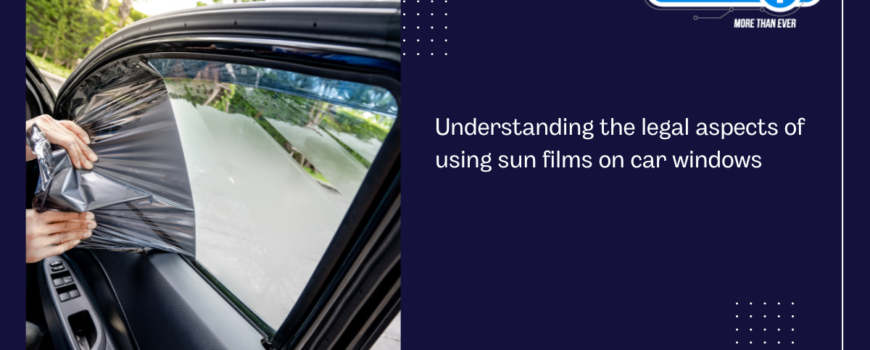Have you recently realized that your automobile’s interior is showing signs of wear and tear from sunlight exposure? Sunfilm could be the solution. Using sun film on your car windows can keep the interior cool and protect against UV rays. But wait. Before making any modifications, it’s essential to understand the legal aspects.
In India, the use of sun film on car windows has been contentious. Many car owners need to be aware of the sun film regulations, leading to potential fines and legal issues. This blog will guide you through the legalities of using sun film on car windows, ensuring you stay on the right side of the law.
What is Sun Film and Why Use It?
Sun film, also known as window tinting, is a thin film applied to car windows to reduce heat and glare from the sun. It offers several benefits:
· Heat Reduction: Keeps the car’s interior cooler by blocking solar heat.
· UV Protection: Protects passengers from harmful ultraviolet rays.
· Privacy: Provides increased privacy by reducing visibility from the outside.
· Glare Reduction: Reduces glare from the sun and headlights, improving driving comfort.

Legal Requirements for Sun Films
Transparency Levels
The primary legal concern with sun film is its transparency. Countries and regions have specific regulations regarding how much light must pass through the windows. This is measured as the Visible Light Transmission (VLT) percentage. Here are some typical regulations:
- Front Windshield: Most regions require a high VLT percentage, often above 70%.
- Side Windows: The VLT percentage for front-side windows must be above 50%.
- Rear Windows: Regulations for rear side windows and the rear windshield are often more lenient, sometimes allowing a VLT as low as 20%.
Check local laws to ensure compliance with these VLT requirements.
Legal Implications of Non-Compliance
Using sun film that does not meet legal standards can lead to several issues:
· Fines: You may be fined if caught with illegal window tinting.
· Vehicle Inspection Failures: Non-compliant sun film can cause your vehicle to fail safety inspections.
· Insurance Issues: In the event of an accident, having illegal tint can complicate insurance claims.
How to Ensure Compliance
Consult Professionals
Before applying sun film, consult a professional installer who understands local regulations. They can recommend films that meet legal standards and install them correctly.
Check Certification
When purchasing sun film, look for certification labels indicating compliance with local laws. Certified films will have the VLT percentage marked.
Measure VLT
If you’re unsure about your current window tint, use a VLT meter to measure it. These devices are available at auto shops and can accurately read your windows’ transparency levels.
Exceptions and Special Considerations
Certain exceptions may apply to sun film regulations:
· Medical Exemptions: Some regions allow darker tints for medical reasons, such as sensitivity to sunlight. You’ll need documentation from a medical professional to qualify.
· Vintage Vehicles: Older cars may have different regulations due to their design and construction. Check if your vehicle qualifies for any special exemptions.
Practical Tips for Using Sun Film Legally
Stay Updated on Regulations
Laws can change, so it’s crucial to stay informed about current regulations in your area. Regularly check government websites or consult with local authorities.
Maintain Documentation
Keep all receipts and certification documents for your sun film. If questioned by law enforcement, you can provide proof that your tint complies with legal standards.
Regular Inspections
Periodically inspect your sun film for wear and tear. Damaged or peeling tint can obscure visibility and may not comply with regulations, even if it was initially legal.
Benefits Beyond Legal Compliance
While staying legal is essential, the benefits of using compliant sun film extend beyond avoiding fines and penalties:
Enhanced Comfort
A fabulous car interior makes driving more comfortable, especially during hot weather. This can be particularly beneficial for long drives or daily commutes.
Protecting Interior
Sun film helps protect your car’s interior from fading and cracking due to prolonged sun exposure. This can preserve the value of your vehicle over time.
Safety Improvement
Reducing glare improves visibility, making driving safer. It can also help prevent accidents caused by blinding sunlight or headlight glare.
Installation and Maintenance
Professional Installation
Proper installation of sun film is crucial to ensure it meets legal requirements and performs effectively. Professional installers have the tools and expertise to apply the film without bubbles or creases, ensuring a smooth and compliant finish.
Regular Maintenance
Keep your sun film clean and free of scratches. Clean the windows with mild soap and water and a soft cloth. Avoid abrasive cleaners that can damage the film.
Periodic Checks
Check the condition of your sun film regularly. If you notice any signs of peeling, bubbling, or discoloration, consider replacing it. Damaged film looks bad, can impair visibility, and may no longer comply.
To Sum Up
Understanding the legal requirements for sun films is essential for every car owner. The 2012 Supreme Court ruling, which bans aftermarket sun films while specifying permissible VLT levels for factory-tinted windows, aims to enhance road safety and security. Car owners can avoid fines, improve visibility, and ensure a safer driving environment by adhering to these regulations. Stay informed, stay compliant, and enjoy a safer drive.

